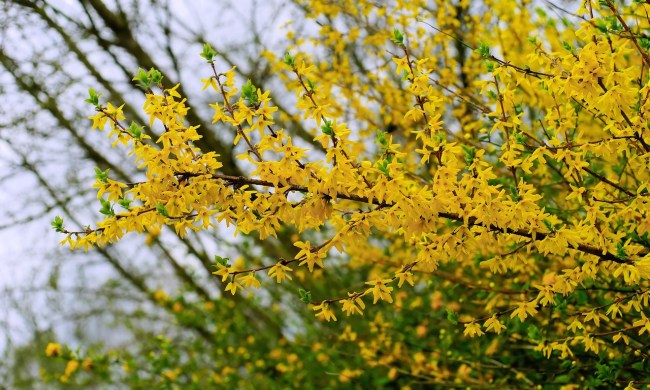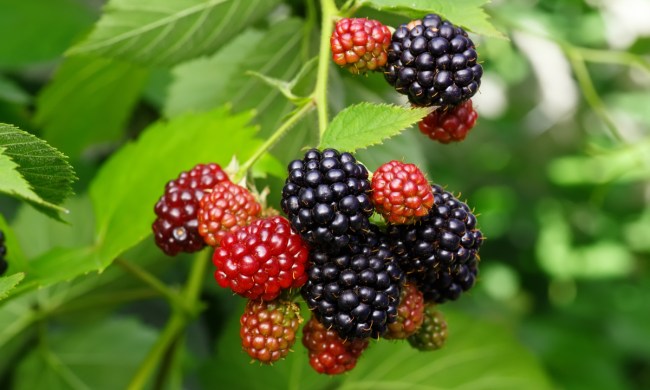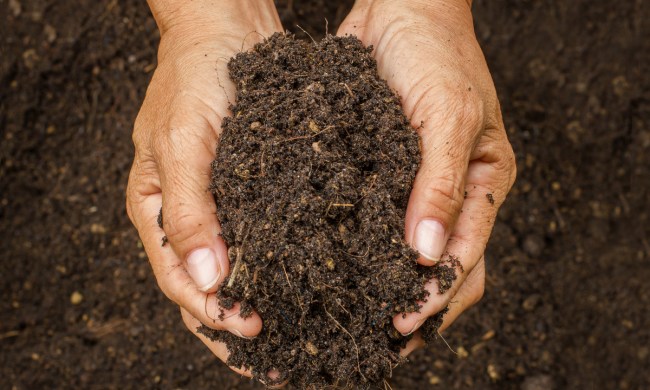Pine trees are a great way to keep a winter garden looking lively, but they’re beautiful in any season. Pine trees are great for providing windbreaks, offering winter food and shelter for birds, adding a pleasant smell to your yard or garden, and just looking nice! Not all types of pine trees are ideal for every yard or purpose, though. If you want to add a pine tree to your home but aren’t sure where to start, this guide to fantastic types of pine trees will help you make your choice.
Eastern white pine

Eastern white pines are one of the most common types of pine trees planted across the U.S., making them familiar and easily accessible. They’re often grown as Christmas trees or planted as windbreaks, but they’re just as lovely growing on their own in a yard or garden. You can even find dwarf varieties that can grow in containers.
With their classic conical pine shape, fast growth, and hardy nature, eastern white pines are an excellent choice for beginners and experts alike. Eastern white pines are also native to the Eastern U.S., so you don’t need to worry about them escaping your garden and becoming invasive.
Mugo pine

Mugo pine is among the smallest types of pine trees, and it has many common names. Sometimes called mountain pine, bog pine, or creeping pine, mugo pine is a small European pine that grows in rounded mounds. When left on their own, they will spread and grow taller, but their slow growth is easily controlled through semi-regular pruning. You can also use pruning to control their height alone, leaving them to spread and act as a ground cover. Mugo pines are easy to care for, needing little water or fertilizer once they’re established.
Patula pine

Patula pine, also called Mexican weeping pine, is a beautiful pine that stands out among other types of pine trees. It has needles that hang down from the branches, giving it an appearance similar to that of a weeping willow. The needles can be solid green, but are also sometimes streaked or highlighted with lime green or yellow. This gives it a softer, more graceful appearance than some other types of pines. Patula pines are native to Mexico and suited to the hot, dry weather of the American Southwest. While they can grow quite tall, they are also easy to control through pruning.
Loblolly pine

Loblolly pines are highly adaptable, fast growing, and beneficial for your garden. They are native to the southeastern part of the U.S. As mature trees, they are most easily recognized for their bare trunks, as the lowest branches drop off. This is called self-pruning, and while it can be alarming to see, it’s also perfectly natural for loblolly pines. The branches it drops can be useful for crafting, and the needles are an excellent natural mulch. Loblolly pine trees have deep roots, which makes them great for preventing soil loss but makes them difficult to transplant or grow in containers.
Virginia pine

Virginia pine trees, also called Jersey pines and scrub pines, are native to the eastern area of the U.S. and found in many forests. These pines are highly adaptable and can grow in almost any soil type, including poor soil. Their resiliency makes them a great choice for sections of your yard where other plants struggle to grow, as well as for gardeners who are busy, travel frequently, or generally have difficulty keeping plants healthy. Virginia pines are considered medium-sized trees, although their maximum height of 40 feet can still seem large compared to other garden plants.
Longleaf pine

The longleaf pine is one of the types of pine trees that’s considered endangered. It is hardy and adaptable, native to the Southeastern U.S., and plays an important role in forests, offering vital food and shelter to a variety of animals. Longleaf pine bark is resistant to fire, and forest fires help its seeds survive.
However, the population of longleaf pine trees has decreased severely, primarily due to increased deforestation and a decrease in fires. If you live in the Southeastern U.S. and are interested in helping restore the longleaf pine to its former glory, you might be interested in the Longleaf Pine Initiative, run by the National Resources Conservation Service.
Lacebark pine

Lacebark pine gets its name from the distinctive mottled look of its bark, which makes it a gorgeous addition to gardens. This pine is native to China, and it’s a small to medium-sized tree, typically growing to around 30 to 50 feet tall. It is a slow-growing pine, and can be kept small through pruning. Lacebark pines can even grow as bonsai trees. They are fairly hardy, but they can struggle in hotter climates, making them better suited to northern regions. Your lacebark pine may need a windbreak or more frequent pruning, as it is more prone to wind damage than other types of pine trees.
These seven types of pine trees are a great place to start. No matter the climate, conditions, or aesthetic of your home, there’s sure to be a pine tree that works for you. From the small mugo pine to the tall loblolly or longleaf, pine trees are hardy, adaptable, and useful to have in your yard. Hopefully, this guide has helped you narrow down what the best pine tree for your garden is.




